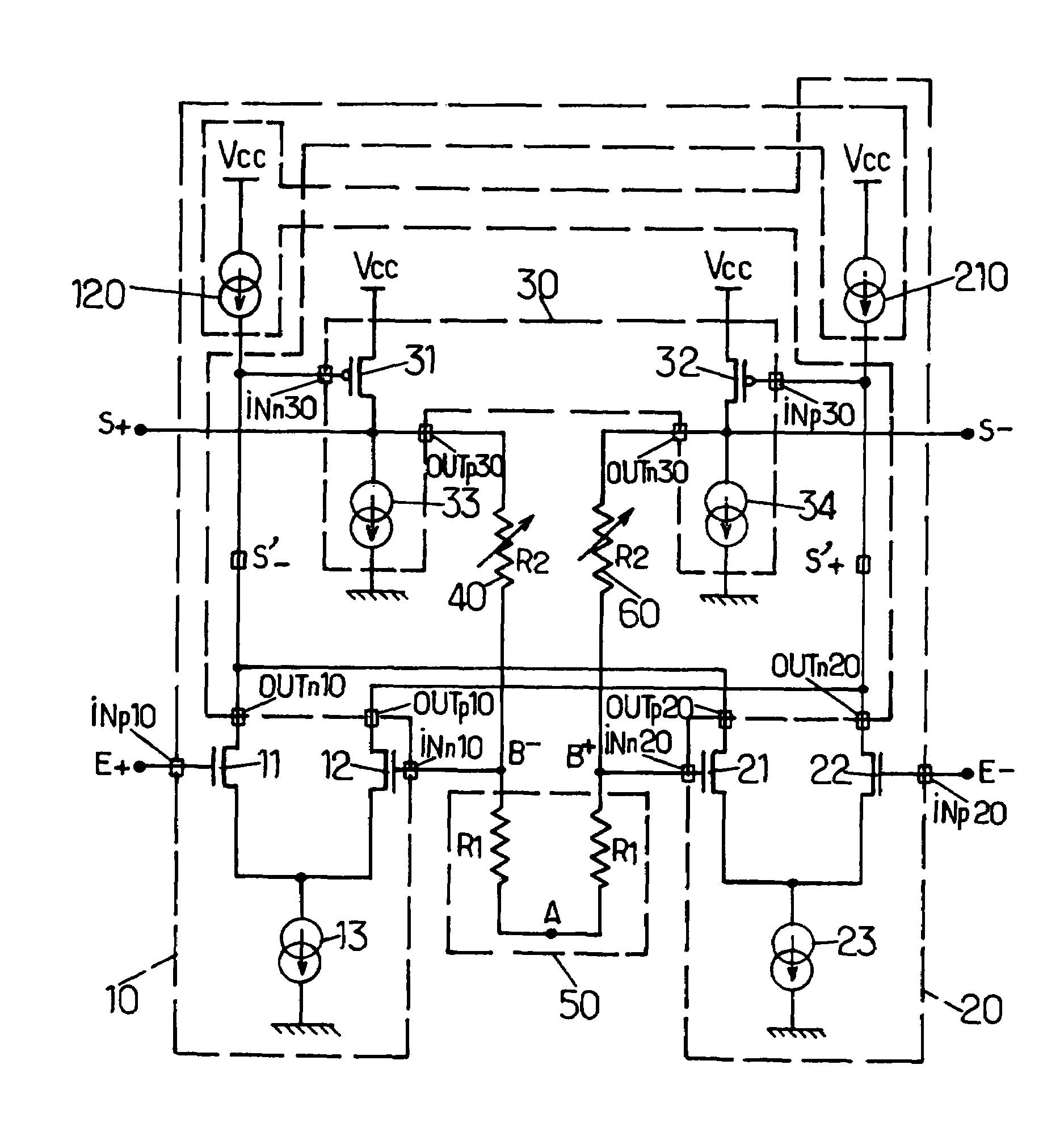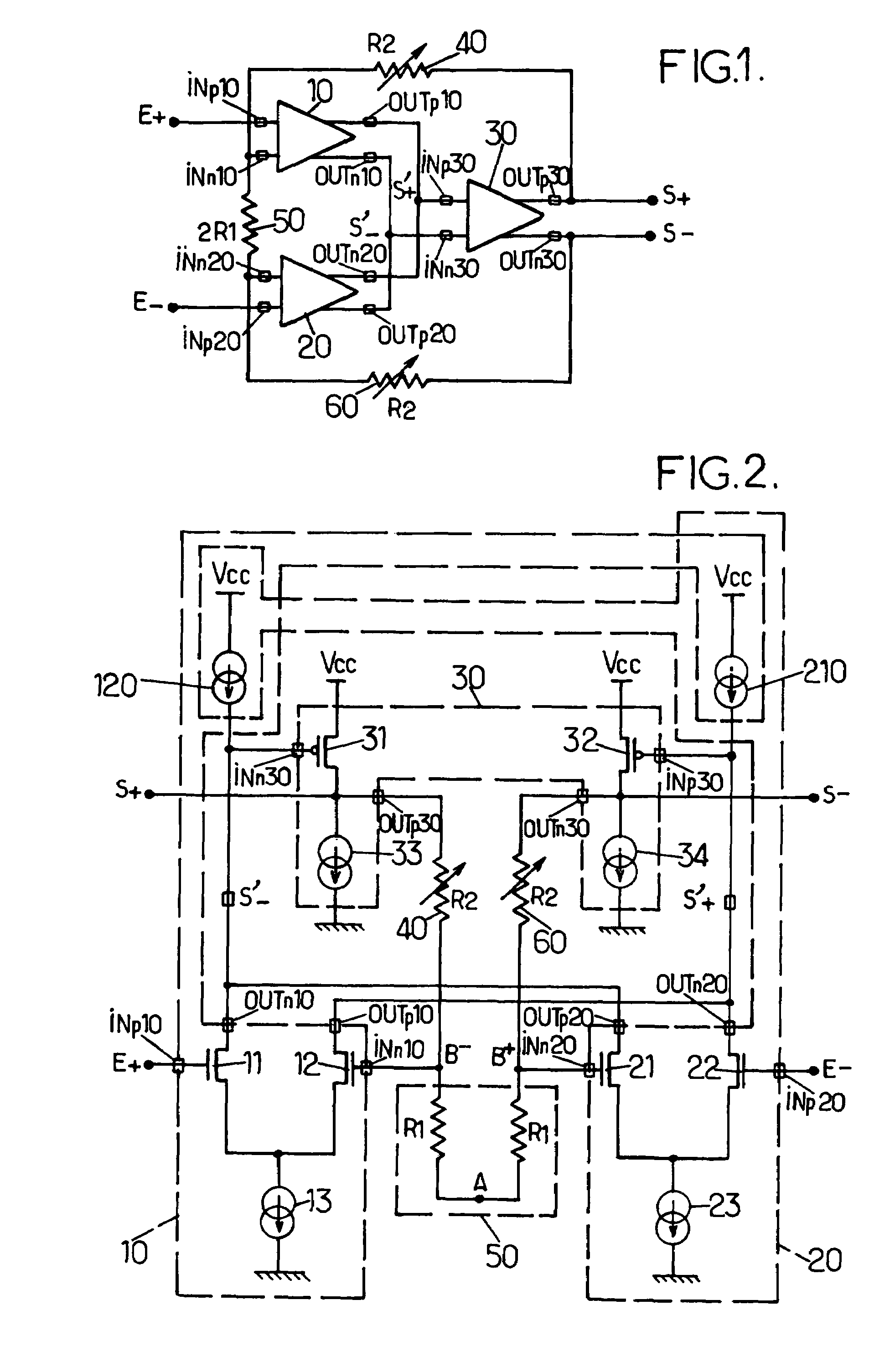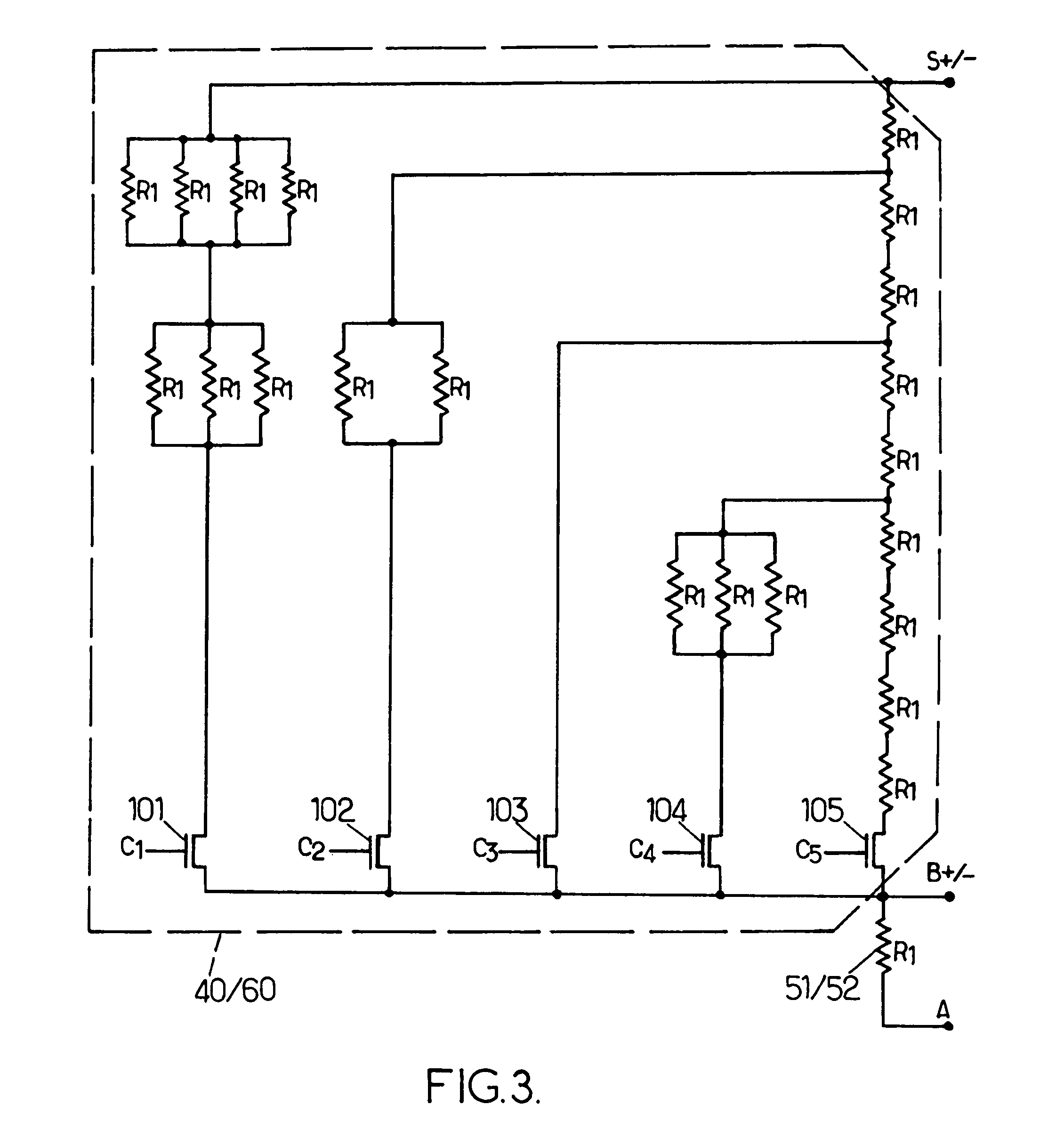Variable-gain differential amplifier
a differential amplifier and variable gain technology, applied in the field of integrated circuit amplifiers, can solve the problems of low input impedance, known circuit, 10 k, etc., and achieve the effect of high input impedan
- Summary
- Abstract
- Description
- Claims
- Application Information
AI Technical Summary
Benefits of technology
Problems solved by technology
Method used
Image
Examples
Embodiment Construction
[0026]FIG. 1 is a functional circuit diagram of an exemplary embodiment of a differential amplifier according to the present invention. The amplifier comprises differential amplification circuits 10, 20 and 30, coupled together, in part, via impedances 40, 50 and 60 forming a negative feedback loop for controlling the gain.
[0027]The differential amplification circuits 10 and 20 are preferably identical to one another. Each differential circuit 10 or 20 comprises a positive input INp10 and INp20, respectively, a negative input INn10 and INn20, respectively, a positive output OUTp10 and OUTp20, respectively, and a negative output OUTn10 and OUTn20, respectively. These differential circuits each comprise a differential pair of transistors biased by current sources. The transistors are for example MOSFET transistors. Such differential circuits are high-gain circuits with a high input impedance. The positive input of the differential circuit 10 is connected to a positive input terminal E...
PUM
 Login to View More
Login to View More Abstract
Description
Claims
Application Information
 Login to View More
Login to View More - R&D
- Intellectual Property
- Life Sciences
- Materials
- Tech Scout
- Unparalleled Data Quality
- Higher Quality Content
- 60% Fewer Hallucinations
Browse by: Latest US Patents, China's latest patents, Technical Efficacy Thesaurus, Application Domain, Technology Topic, Popular Technical Reports.
© 2025 PatSnap. All rights reserved.Legal|Privacy policy|Modern Slavery Act Transparency Statement|Sitemap|About US| Contact US: help@patsnap.com



